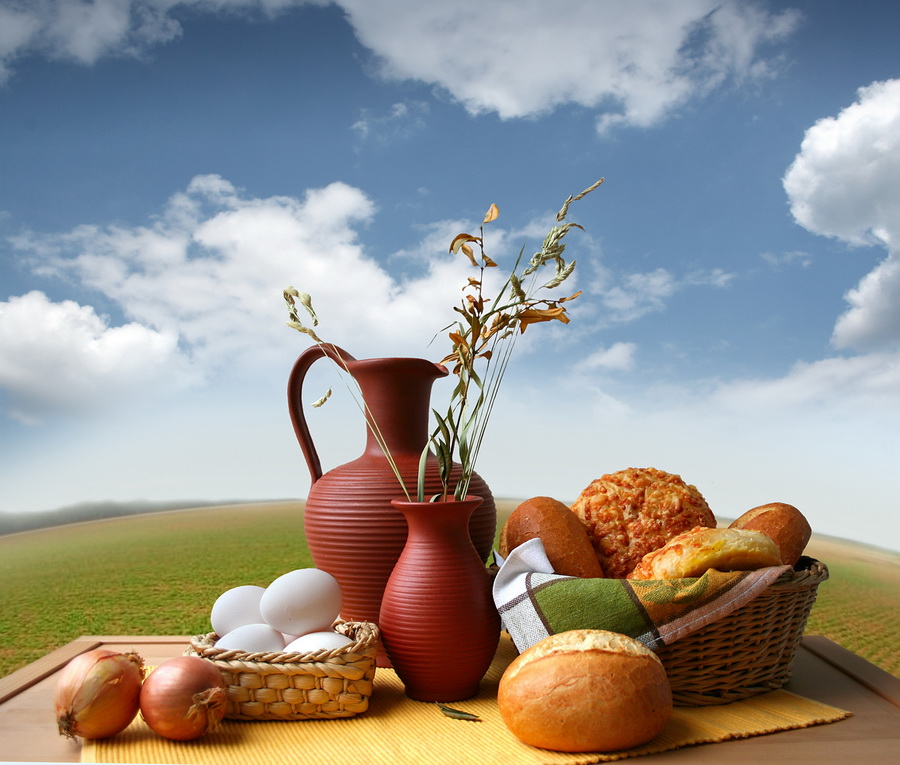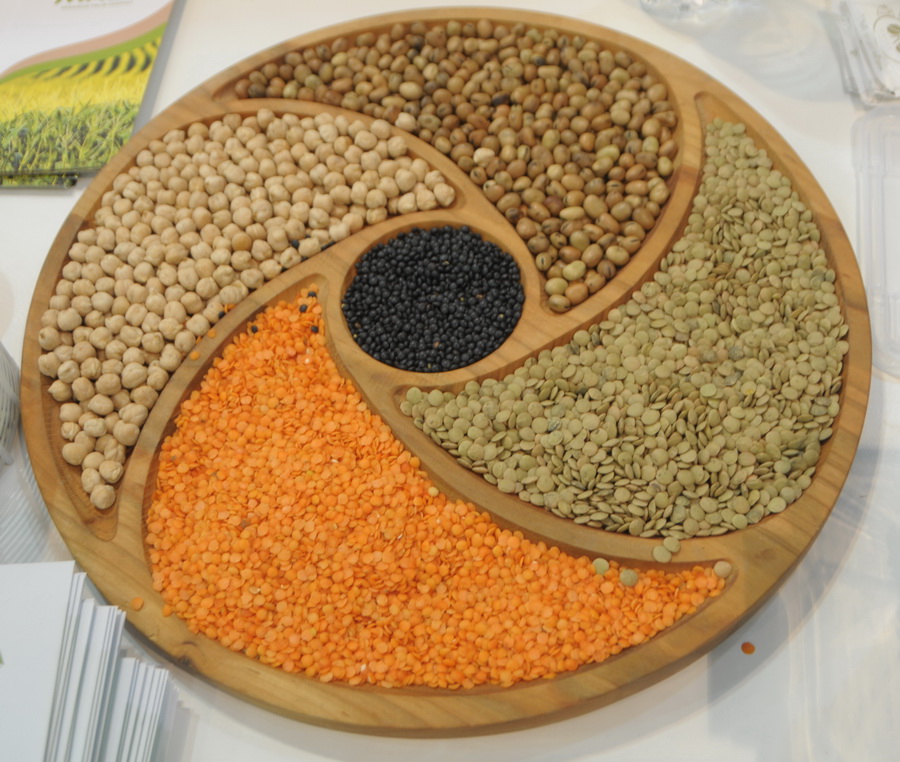FAO is currently implementing rapid needs assessments for the agricultural sector in Ukraine, both at the oblast level across the country, as well as in areas with significant population displacement. Results of assessments and surveys by FAO and other partners will establish the needs of both commercial and smallholder farmers for the spring planting season, and crop and animal production, and allow for a better understanding of the growing constraints on food security.
The war that began on 24 February 2022 has caused extensive damage and loss of life in key population centres, spread across rural areas, and sparked massive displacement. As of 23 March, more than 3.6 million people had been forced to abandon their homes and flee across borders to safety. Millions more are internally displaced. The violence has escalated rapidly, and it remains extremely difficult to predict the evolution of the conflict and its effect on lives, livelihoods, food security and nutrition.
It is clear that the war has resulted in a massive, and deteriorating, food security challenge. It has already significantly disrupted livelihoods during the agricultural growing season, through physical access constraints and damage to homes, productive assets, agricultural land, roads and other civilian infrastructure.

It is uncertain whether Ukraine will be able to harvest existing crops, plant new ones or sustain livestock production as the conflict evolves. The conflict has led to port closures, the suspension of oilseed crushing operations and the introduction of export licensing restrictions and bans for some crops and food products. Key cities are being encircled and continue to experience heavy bombardment, leaving people isolated and facing severe shortages of food, water and energy supplies. As insecurity persists and both local and national supply chains are disrupted, people are likely to fall deeper into emergency levels of hunger and malnutrition.
Major concerns include:
disruption to winter harvesting and spring planting;
agricultural labour availability, impacted by displacement;
access to and availability of agricultural inputs, particularly fuel;
disruption of logistics and food supply chains;
abandonment of and reduced access to agricultural land;
damage to crops due to military activity, especially during vegetative stages in spring; and destruction of food system assets and infrastructure.
These concerns apply across agricultural activities by smallholders and agribusinesses.
Both are critical to Ukraine’s food security.
Food security concerns
Populations in eastern regions affected by the 2014 conflict already faced food security challenges. A 2021 food security and livelihoods assessment by FAO2 revealed that rural areas within 0–10 km of the contact line in Donetska and Luhanska oblasts (regions) in both government controlled areas and non-government controlled areas were the most vulnerable - in this area, 58 percent of the population faced chronic and material challenges related to limited livelihoods opportunities such as lack of income generating opportunities and access to markets.
Furthermore, based on the Food Insecurity Experience Scale, 28.3 percent of households experienced food insecurity at «moderate or severe» levels with female-headed households significantly more food insecure (37.5 percent) than male-headed households (20.5 percent). In these areas, households increasingly relied on backyard agriculture and livestock production to cover basic food security and nutrition needs, while resorting to negative coping strategies to fill gaps, such as reducing essential expenditures and spending savings. It can be expected that in these eastern oblasts the food security situation may have deteriorated further due to the invasion on 24 February 2022.
More broadly, Ukraine had a very good harvest in 2021, and as a result many rural households are likely to have above-average levels of food stocks and/or financial resources, which will probably provide some buffer as livelihoods and incomes are disrupted by the conflict. However, if the conflict spreads and continues, there will be increased stress on food security until food from the next harvest becomes available in the summer. For rural households without stocks or other resources, or with smaller landholdings or without a primary income-earner, including many of the disabled, widowed and elderly, the food security situation will be much more precarious.
Food supply chains that feed larger population centres are sophisticated and involve a large number of smaller companies, traders and processors who may experience difficulties in accessing finance and liquidity - quite apart from fuel shortages, movement restrictions and security concerns.
Within densely populated urban areas there have already been significant and severe disruptions to supply chains and markets. Consumption gaps are already evident in conurbations where it has been documented that active hostilities have prevented households from accessing markets over consecutive days, assuming food is even available.
Until the start of the conflict, Ukraine’s social protection system was reaching 30 percent of the population and 77 percent of the poorest quintile. A further impact of the conflict is that as territory is occupied, people are at risk of losing access to critical income sources, including government-provided pensions and social safety nets, impacting purchasing power. Even before the conflict, most Ukrainians spent over 50 percent of their income on food.
At this stage of the war, precise information on the food security status of different populations is hard to ascertain. Preliminary results from an FAO rapid needs assessment, based on results from 19 oblasts, indicate
that food shortages are expected immediately or in the next three months in over 40 percent of cases, and that supply of and access to food is a significant issue across all trading sectors.

Agriculture overview
In 2020, 31 percent of Ukraine’s total population was rural, 58 percent of whom were of working age (between 16 and 59 years old). The agriculture sector contributed approximately 9.3 percent to the gross domestic product8 and employed nearly 17 percent of the working population.
Of the total land area, 68.5 percent is agricultural.
Large agribusinesses dominate. Vertically integrated farms using state-of-the art machinery and storage facilities have optimal yields and productivity, and ready access to investment capital, mainly growing commodity crops - grains and oilseeds - for export.
However, there is also a significant smallholder sector contributing 41 percent of gross agricultural production from an average land holding of less than 3 hectares. Smallholders play an important role in local employment, livelihoods and food security, particularly as key suppliers to short local value chains.
In addition to producing around a fifth of grains and sunflowers, smallholders dominate subsectors essential for a diverse and nutritious diet, including vegetables, fruits and berries, honey, milk and eggs, as well as cattle production. They are responsible for almost a third of total national meat production.
FAO’s preliminary Information note on the impact for global agricultural markets and risks associated with the conflict, suggests that between
20 and 30 percent of the areas under winter cereal, maize and sunflower seed production in Ukraine will either remain unharvested, or not be planted this spring. The yields of these crops are also likely to be adversely affected due to a lack of fertilizers and pesticides.
Staple grain availability
The immediate food security dimension of this conflict is related to food access and not food availability.
There are currently no significant issues with staple crop availability in Ukraine. At the start of the war, available grain stocks in Ukraine were approximately 114 percent of estimated annual demand, mainly due to a high level of corn stocks.
Before the invasion, 7 million metric tonnes of wheat and 12 million metric tonnes of maize still remained to be exported, and national grain stocks were higher than last year. The average per capita grain consumption (wheat, rye, barley and corn) between 2015 and 2021 was 131 kg per year, so 19 million metric tonnes would be sufficient for over 3 years’ average national consumption.
In addition, on 9 March, due to a lack of viable export channels and the need to address emerging domestic food security concerns, the Ukrainian government purchased grain from farmers and traders for government stocks. It is estimated that this will be equivalent to one year’s national consumption (approximately 4.3–5 million metric tonnes of wheat).
The majority of key grain silos and storage facilities in Ukraine are not currently under Russian control, but railway connections have been damaged by the war.
Nonetheless, almost 50 percent of available wheat was stored on elevators and farms where active fighting is taking place (Donetska, Kyivska, Luhanska, Mykolaivska, Khersonska and Chernihivska oblasts).
Availability of and access to grain needs to be monitored, and mechanisms developed for grain transportation and storage in safer oblasts, noting complex logistics due to ongoing hostilities.
Input constraints
Ukraine depends heavily on fuel imports, with about 70 percent of imports of petrol and diesel coming from the Russian Federation and Belarus. A key bottleneck to the spring planting season, where it is possible due to the war, is fuel availability. Despite active measures by the Government of Ukraine to mitigate fuel shortages (including possible temporary cancellation of excise duty, and reduction in the VAT rate to 7 percent), this remains a critical factor impeding the start of the sowing season.
Only a fifth of almost 1 300 large agribusinesses surveyed by the government in the week of 14 March have sufficient fuel to plant this spring. The survey also reveals that preparedness to cultivate this spring is compromised due to poor availability of other agricultural inputs:
▶ Seeds: 58 percent of what is required is available.
▶ Nitrogen fertilizer: 40 percent of what is required is available.
▶ NPK fertilizer: 55 percent of what is required is available.
▶ Pesticides: 28 percent of what is required is available.
▶ Equipment: 41 percent of what is required is available.
The availability of seed for planting this year is relatively high as Ukraine is generally self-sufficient. According to preliminary estimates, there may be some shortage of corn and sunflower seeds, but seed supply for vegetable crops is expected to be sufficient due to available stocks and insignificant import requirements. The key constraint is logistics and transportation of seeds from stocks to where they need to be planted.
Although Ukraine is usually a major producer of nitrogen fertilizers (just over 5 million tonnes in 2020), in recent years imports made up around a third of requirements. Forty-six percent of fertilizer imports come from Belarus, 37 percent from other countries including Georgia, Uzbekistan and Kazakhstan, with Poland supplying 17 percent.
The war has complicated imports of fertilizer. Domestic fertilizer production has been compromised, with production closed in some areas, sometimes due to lack of gas.
A shortage of plant protection products may reduce cereal yields in the months ahead. According to preliminary estimates, the supply of plant protection products to agricultural enterprises nationally is around 40–45 percent of what is required. The peak period of imports is from February to March. The invasion and blocking of port infrastructure during this period of time has forced importers to refocus on western border crossings, leading to significant delays.
Disruptions in the supply of breeding stock, veterinary medicines, animal feed ingredients and other critical inputs may damage and severely disrupt the activities of commercial pork and poultry farms supplying towns and cities.
Grains
Ukraine’s farmers planted 7 million hectares of winter wheat in September-October 2021, due to be harvested in July-August 2022.
Winter crops (wheat and rye) are important for food security in Ukraine.
Bread and bakery products comprised 17 percent of household food expenditure in 2020/2021.
Annually, winter crops account for almost 50 percent of grain-sown areas and about 40 percent of the annual grain harvest. It is estimated that 49 percent of winter wheat and 38 percent of rye to be harvested in July-August 2022 are in occupied or war-affected areas.

Oilseeds
Sunflowers are typically planted in April and harvested from mid-September to mid-October, predominantly in the southern (Mykolaivska, Khersonska, Zaporizka) and eastern (Kharkivska, Donetska and Luhanska) oblasts - those hardest hit by the war.
The conflict means that the normal scale of spring planting of sunflowers will not be possible in at least nine oblasts. Even in areas with no active ground hostilities, such as in the central and western parts of the country, logistical issues including fuel and driver shortages remain significant.
The area sown under sunflowers in Ukraine in 2022 may be 35 percent lower compared with 2021.
Vegetables
The conflict will likely severely disrupt the vegetable production of tens of thousands of smallholder farmers who decide to stay behind, due to lack of inputs, lack of access to land and concerns over safety.
Land preparation for vegetables - including potato, tomato, cucumber, carrot and onion - generally starts in late February through March, followed by sowing from mid-March through mid-May and harvesting between July and mid-September.Livestock
Pig
producers in Donetska, Luhanska, Chernihivska, Sumska, Kharkivska and Khersonska oblasts - areas particularly badly affected by the war - face a lack of feed, veterinary medicine and other vital inputs. The inability to transport pigs for slaughter makes it hard to continue regular operations. Some farms and their infrastructure have been destroyed or damaged by military attacks, and forced displacement has reduced the labour force.
Broken logistic and supply chains mean that pig producers across Ukraine have problems slaughtering and selling pigs. As a consequence of this, they lack revolving funds and cannot operate normally.
In addition, there is a growing environmental problem caused by an increased number of dead animals and an inability to process or store them.
The State Service of Ukraine on Food Safety and Consumer Protection has collected data since the first week of the war on the availability of commercial veterinary drugs, animal feed and feed additives in Ukraine. Given supply chain and manufacturing issues, commercial supplies of veterinary drugs, animal feed and feed additives are declining.
Smallholder farms with livestock are in a more favourable position, as they can slaughter animals for household consumption, processing and selling at nearby local markets where access permits.
Access and security challenges
There is concern over security risks associated with land preparation for spring planting. There are credible reports of unexploded ordinance and mines, and military casualties lying unburied in fields. In addition, farmers need guarantees that they will not be targeted when operating large-scale agricultural machinery.
Humanitarian access is constrained despite efforts to establish humanitarian corridors. Sporadic fighting and indiscriminate attacks on roads and infrastructure across Ukraine put humanitarian aid deliveries at risk, including urgent agricultural livelihood support.
Significant logistics constraints, including the lack of drivers, vehicles and particularly fuel, hamper the transport of agricultural livelihood support to hardest-hit areas.
Actions
Agricultural production must be allowed to resume immediately and safely to avoid further potential impact on food security in Ukraine - and beyond - in the coming days, weeks and months.
Parties to the conflict should apply regulations under their own military manuals, and are obliged to abide by the Additional Protocols of the Geneva Conventions, which state that objects necessary for food production and distribution, such as farms, markets, water systems, mills, food processing and storage sites must not be attacked, and that objects that are indispensable to the survival of civilian populations, such as foodstuffs, crops, livestock, agricultural assets, drinking water installations and irrigation works must not be destroyed, targeted or rendered useless.
A key focus of support should be on the 2022 spring sowing campaign for maize, barley and other crops, particularly the provision of fuel for machinery.
It is critical that standing winter cereal crops are protected and that harvesting can take place safely and unimpeded in July-August.Ensure
support to the tens of thousands of smallholders who decide to stay behind and actively farm to safeguard continued availability of vegetables and ongoing dairy production, by providing animal feed and fodder, seeds and fertilizer.
Support the livestock sector with veterinary medicine and animal feed inputs to reduce the risk of conflict-related disruption and stock reduction.
Support micronutrient enrichment of wheat flour, and support millers operating in conflict-affected areas to minimize the impact on processing of staple goods.
FAO, Note on the impact of the war on food security in Ukraine ©







